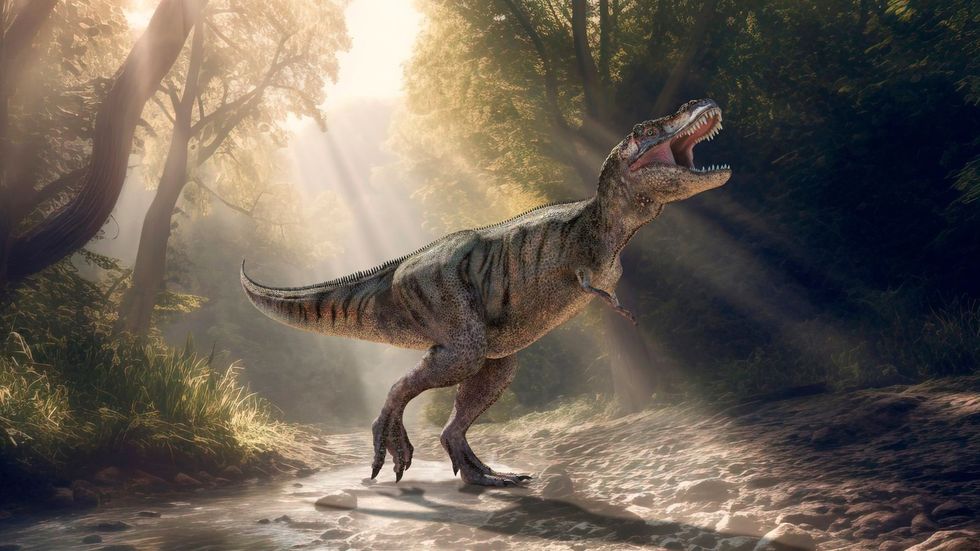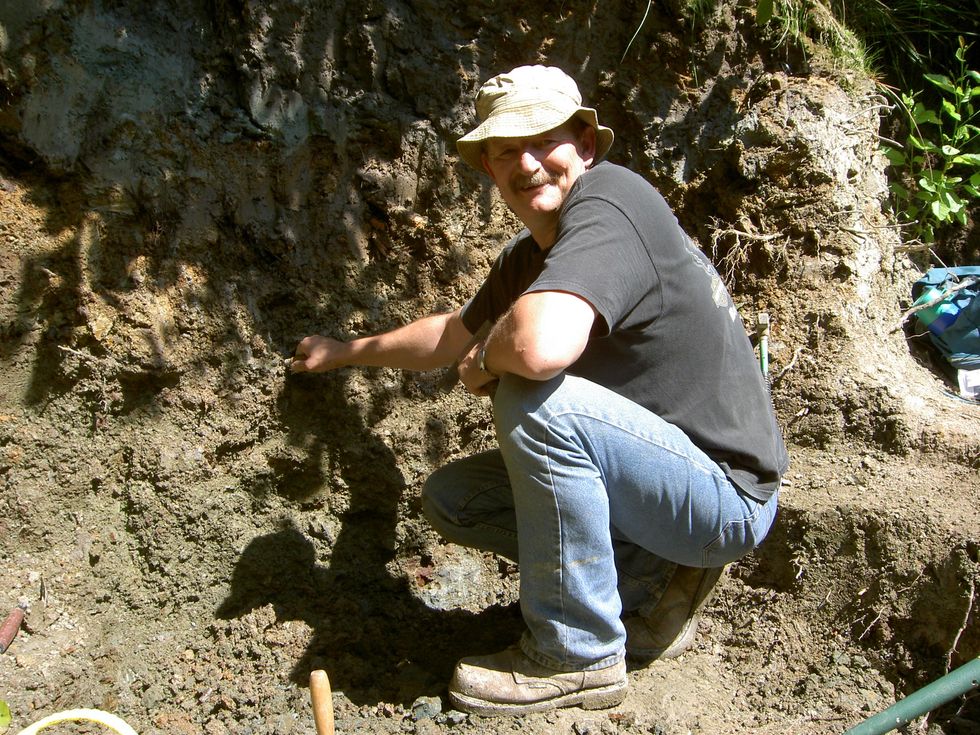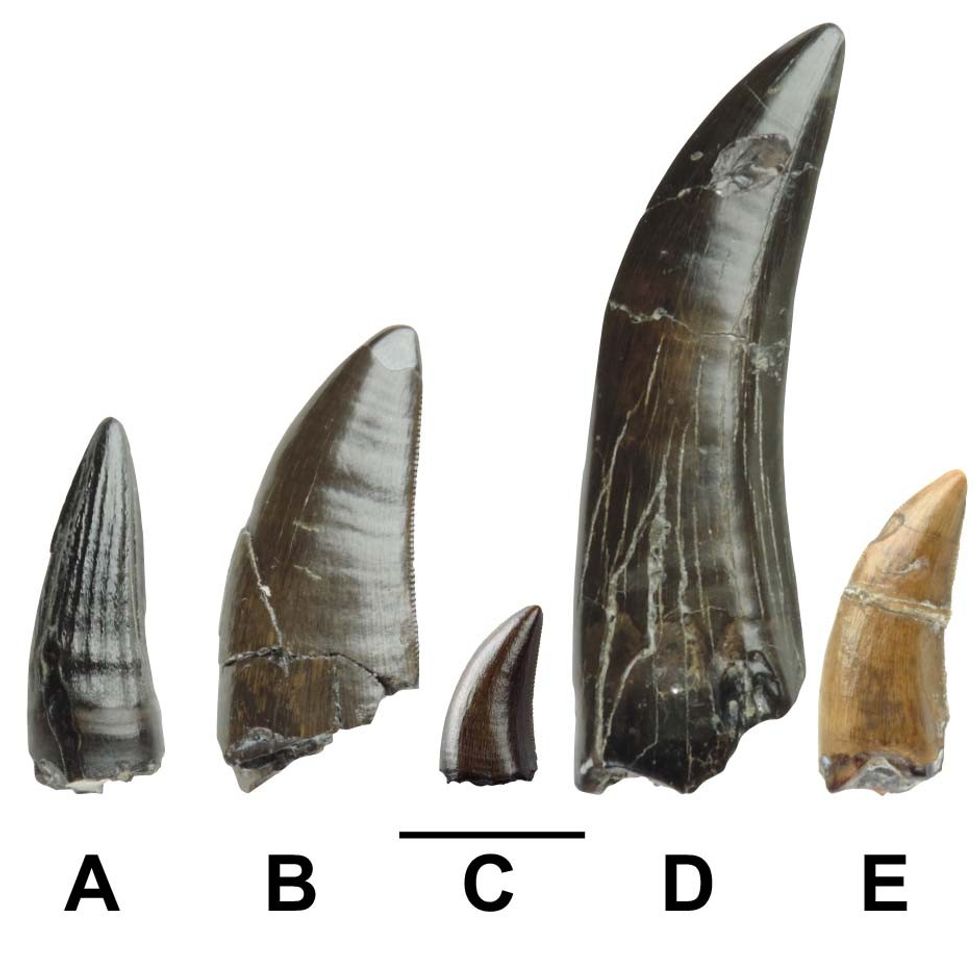Dinosaur discovery in East Sussex completely changes what scientists know about Tyrannosauruses
The discovery was made possible through the dedication of retired quarryman Dave Brockhurst, who spent three decades collecting fossils
Don't Miss
Most Read
Trending on GB News
Groundbreaking research has uncovered evidence of multiple meat-eating dinosaur species that roamed East Sussex 135 million years ago.
The discovery in Bexhill-on-Sea marks the first-ever identification of tyrannosaurs in sediments of this age and region.
Scientists from the University of Southampton identified several predator groups through fossilised teeth, including tyrannosaurs, spinosaurs and members of the Velociraptor family.
"Meat-eating dinosaurs are rare in the Cretaceous sediments of southern England," said Dr Chris Barker, lead author of the research.
The tyrannosaurs discovered would have been approximately one-third the size of Tyrannosaurus rex, hunting small dinosaurs and reptiles in their floodplain habitat.
Barker explained: "Dinosaur teeth are tough fossils and are usually preserved more frequently than bone.

The discovery in Bexhill-on-Sea marks the first-ever identification of tyrannosaurs in sediments of this age and region
GETTY
"As a child I was fascinated by dinosaurs and never thought how close they could be," said Brockhurst.
"Many years later I started work at Ashdown and began looking for fossils.
"For that reason, they're often crucial when we want to reconstruct the diversity of an ecosystem."
The research team used multiple analytical techniques, including phylogenetic, discriminant and machine learning methods, to accurately identify the teeth specimens.
The discovery was made possible through the dedication of retired quarryman Dave Brockhurst, who spent three decades collecting fossils at Ashdown Brickworks.
Brockhurst has uncovered thousands of specimens, with around 5,000 already donated to Bexhill Museum.

Dave Brockhurst at the site where the tyrannosaur and raptor teeth were discovered
UNIVERSITY OF SOUTHAMPTON

Discovered teeth of (a) spinosaur, (b) tyrannosaur, (c) dromaeosaur, (d) possible tyrannosaur, (e) indeterminate tyrannoraptoran - the group containing tyrannosaurs and dromaeosaurs (Velociraptor and kin)
BARKER ET AL (2024)
"I'm happy with tiny fish scales or huge thigh bones, although the preservation of the dinosaur teeth really stands out for me."
The research involved collaboration between the University of Southampton, London's Natural History Museum, the Hastings Museum and Art Gallery, and the Museo Miguel Lillo De Ciencias Naturales in Argentina.
"Southern England has an exceptionally good record of Cretaceous dinosaurs," said Dr Darren Naish, a co-author of the study.
These East Sussex specimens are older than those found on the Isle of Wight and have remained mysterious until now.
The findings were published in Papers in Palaeontology, using multiple analytical methods to ensure accurate classification of the teeth.
Several of the discovered specimens are now on display at Bexhill Museum in East Sussex.
The research was funded by the University of Southampton's Institute for Life Sciences.
"200 years after the naming of the first dinosaur, Megalosaurus, there are still really big discoveries to be made. Dinosaur palaeobiology is alive and well," said Dr Neil Gostling from the University of Southampton.
The study highlights the vital role of museum collections, curators, and collectors in advancing our understanding of dinosaur diversity.







